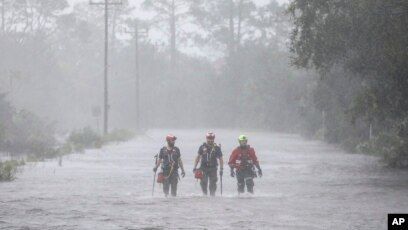Florida Hurricanes

I grew up in Florida and can remember when our hurricanes rarely ever hit category two. They were more like tropical storms. Hurricane Donna hit two years before I was born and that was the strongest one until the infamous Hurricane Andrew in 1992. Andrew hit south Florida as a category five hurricane leaving so much destruction in its path, we hadn’t seen anything like that before. That’s when things began to change.
Emergency management, safety, and preparedness plans were put into place, new building codes were adopted, wind-resistant windows and doors were constructed, and new rules were enacted for educating building inspectors and plans examiners.
2004 was an extremely active year with Hurricane Charley (August 13) coming in on the west coast as a category four and crossing the state, heading up the coast into South and North Carolina. Shortly after Charley left, August 24, along came Hurricane Frances, a category two on the east coast. Frances hit Florida twice; it went over to Tampa and looped back and came through again. It was quite the rainmaker.
September 16 Hurricane Ivan hit the west coast as a category three, then on September 13 we had Hurricane Jeanne hit in the same spot on the east coast as another category 3 hurricane. The good thing that can be said about these hurricanes is that at least they had dissipated by the time they hit Florida; they were all category five hurricanes before reaching our state. 2004 was a very busy year; it brought so much devastation to the State of Florida, but we are a resilient bunch, and we rebuild and carry on.
2005 we had hurricane Wilma another category three hit Key West. We had quite the reprieve as we didn’t have another major hurricane until 2017 when hurricane Irma hit Marco Island as a category three. Hurricane Michael, 2018, was a powerful category five when it came onshore at the panhandle.
Then we were lucky again until 2022 when Hurricane Ian came along and weakened to a category four just before hitting the southwest coast. It came across the state and caused so much damage on the east coast you thought we had gotten the direct hit. A late bloomer, Hurricane Nicole hit in November 2022, thankfully as a category one on the east coast. We were still recovering from Ian though, so she was not welcome at all. She brought so much more rain to an already soaked east coast. But once again, we rebuild and carry on.
August 30, 2023, Hurricane Idalia hit the panhandle as another category three storm. Luckily, that was the only hurricane we had in 2023. We were counting our blessing that year as we were still recovering from Ian.
So far this year, we had Hurricane Debby hit the big bend area on August 25 as a category one, but it was such a slow mover it caused a lot of flooding that we didn’t need. Then on September 26 Hurricane Helene hit the big bend area again, this time as a category four storm.
On October 10, we saw the wrath of Hurricane Milton, he had picked up strength and we thought the Tampa Bay area was going to have a direct hit from a category five hurricane. Luckily, Milton weakened to a category three storm and turned slightly south. Milton was so large, it covered the entire state and caused damage to every county. Almost all the counties were without power, some still are (six days later). We have had a lot more flooding, trees down, power lines down, tornados spawned on the opposite coast before the storm crossed the state, and roof and property damage across the state. But once again, we rebuild and carry on.
We sure hope we don’t have any more storms this season, but we have a month and a half to go. Pray for Florida.
The hurricanes are getting larger and more intense than they used to be. I don’t know if that has to do with global warming, El Nino, or El Nina, but I just wish whatever is causing it would stop. When you live somewhere surrounded by water, storm surge can be a scary thing. If you are planning on moving here, do your homework about our hurricanes, don’t get caught off guard!



